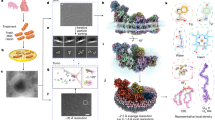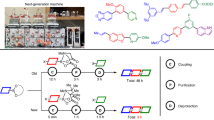Abstract
ACETONE-HYDROCHLORIC acid has been widely used to split hæmoproteins, including cytochromes of the a type which contain formyl substituents in their prosthetic groups. Results reported below show that formyl porphyrins and hæmins react with acetone-hydrochloric acid, and hence it is necessary to exercise caution in the use of this reagent. Fortunately the reaction between formyl porphyrins and acetone-hydrochloric acid is a slow one (48–72 hr. being necessary for complete conversion at room temperature) so that if the temperature is kept low and only a relatively short time is allowed for cleavage of hæmoprotein the amount of alteration of a formyl group is negligible.
This is a preview of subscription content, access via your institution
Access options
Subscribe to this journal
Receive 51 print issues and online access
$199.00 per year
only $3.90 per issue
Buy this article
- Purchase on Springer Link
- Instant access to full article PDF
Prices may be subject to local taxes which are calculated during checkout
Similar content being viewed by others
References
Chu, T. C., Green, A. G., and Chu, E. J., J. Biol. Chem., 190, 643 (1951).
Lemberg, R., and Stewart, M., Aust. J. Exp. Biol. Med. Sci., 33, 451 (1955).
Parker, M. J., Biochim. Biophys. Acta. (in the press).
Dewar, M. J. S., ‘The Electronic Theory of Organic Chemistry’, 126 (Clarendon Press, 1949).
Author information
Authors and Affiliations
Rights and permissions
About this article
Cite this article
CLEZY, P. Reaction of Formyl Porphyrins with Acetone-Hydrochloric Acid. Nature 184, 1142–1143 (1959). https://doi.org/10.1038/1841142b0
Issue Date:
DOI: https://doi.org/10.1038/1841142b0
Comments
By submitting a comment you agree to abide by our Terms and Community Guidelines. If you find something abusive or that does not comply with our terms or guidelines please flag it as inappropriate.



